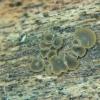
18-12-2025 17:23
 Bruno Coué
Bruno Coué
Bonjour,je serais heureux d'avoir votre avis sur c

18-12-2025 21:17
Pol DebaenstThe identification took me to Byssonectria deformi

18-12-2025 18:07
Margot en Geert VullingsThese plumes were found on rotten wood.They strong

17-12-2025 18:35
 Michel Hairaud
Michel Hairaud
Bonjour à tous/Hi to everyone I am passing along

15-12-2025 15:48
 Danny Newman
Danny Newman
Melanospora cf. lagenaria on old, rotting, fallen

15-12-2025 15:54
 Johan Boonefaes
Johan Boonefaes
Unknown anamorph found on the ground in coastal sa

15-12-2025 21:11
 Hardware Tony
Hardware Tony
Small clavate hairs, negative croziers and IKI bb

15-12-2025 07:09
 Danny Newman
Danny Newman
indet. Rutstroemiaceae sp. on unk. fallen leavesMc
Mollisia or Pyrenopeziza Cf. subviridula
Michel Hairaud,
02-11-2023 18:59
 Bonsoir,
Bonsoir, Je présente une récolte qu'il m'est diffficile d'identifier précisément.
Apothécies jusqu'à 1,5 mm , relativement groupées. Sur bois de feuillu
KOH -
Asques IKI - 4043 x 4-5 , spores bisériées , PS 10-13 µm, 4-5 x 1,5, 2, biguttulées (une guttule à chaque pôle x 0,5 µm)
Paraphyses x3-4 µm, à vacuole réfringente homogène, CRB +
Ectal globulosa , parois brunes, cellules x 7-10 µm , cellules marginales également avec Vacuoles
Beaucoup d'éléments concordent avec le genre Mollisia mais pas d'hyphes d'ancrage observées .
En cherchant sur le site de Zotto, on peut trouver une récolte assez semblable dans le dossier de Pyrenopeziza subviridula .
Merci pour tout avis Amitiés
Michel
Hans-Otto Baral,
02-11-2023 20:36

Re : Mollisia or Pyrenopeziza Cf. subviridula
Hi Michel
from the photo I thought it is IKI+. Valuable would be to see a dead ascus in IKI to show the apical wall thickening. Also I would like to see the VBs of the paraphyses in water. The strongly refractive globose drops we see in the IKI photo originate from the VBs induced by the IKI ?
I would also consider "Mollisia" caespiticia. VBs actually do occur in Pyrenopeziza, but only weakly refractive.
Zotto
Michel Hairaud,
02-11-2023 20:52

Re : Mollisia or Pyrenopeziza Cf. subviridula
Hi Zotto, thanks for your quickk answer.
as I was surprised with the IKI reaction, I made several tests , all negative.
I was surprised to discover the placement of these species (caespiticia, subviridula) in Pyrenopeziza .
I join a pic of the hymenium in water , paraphyses VBs can also be seen here.
I also considered M. caespiticia. I have collections of that species , with spores slightly longer and macro colors with other tinges. Also IKI négative
Another complex to be clarified ?
Michel
as I was surprised with the IKI reaction, I made several tests , all negative.
I was surprised to discover the placement of these species (caespiticia, subviridula) in Pyrenopeziza .
I join a pic of the hymenium in water , paraphyses VBs can also be seen here.
I also considered M. caespiticia. I have collections of that species , with spores slightly longer and macro colors with other tinges. Also IKI négative
Another complex to be clarified ?
Michel
Hans-Otto Baral,
02-11-2023 21:30

Re : Mollisia or Pyrenopeziza Cf. subviridula
M. caespiticia tends to have slightly allantoid spores and can be confused with Calycina vulgaris. A sequence of M. caespiticia in GB actually falls in Calycina, while others belong in Pyrenopeziza s.l. The VBs are not strikin here, I would say low-refractive, but I do not see them clearly.
Michel Hairaud,
02-11-2023 21:57

Re : Mollisia or Pyrenopeziza Cf. subviridula
Rather lower refractive than in typical Mollisia species, yes. Michel
Hans-Otto Baral,
04-11-2023 19:40

Re : Mollisia or Pyrenopeziza Cf. subviridula
I placed your fungus in my caespiticia folder because viridula s.l. has much larger spores. Also M. caespiticia is often longer, but some are similar as yours. E.g. I see the same IKI-induced refractive guttules in the paraphyses in most docus by Ingo Wagner, which make up the majority of docus in my folder "caespiticia 4.5-8.5 x 1.5-2 IKI-"
.
Michel Hairaud,
05-11-2023 10:00

Re : Mollisia or Pyrenopeziza Cf. subviridula
ok. Michel



